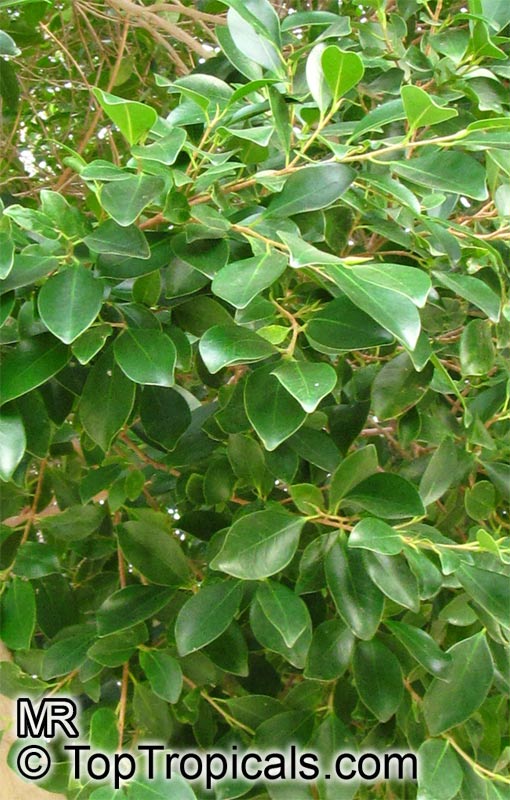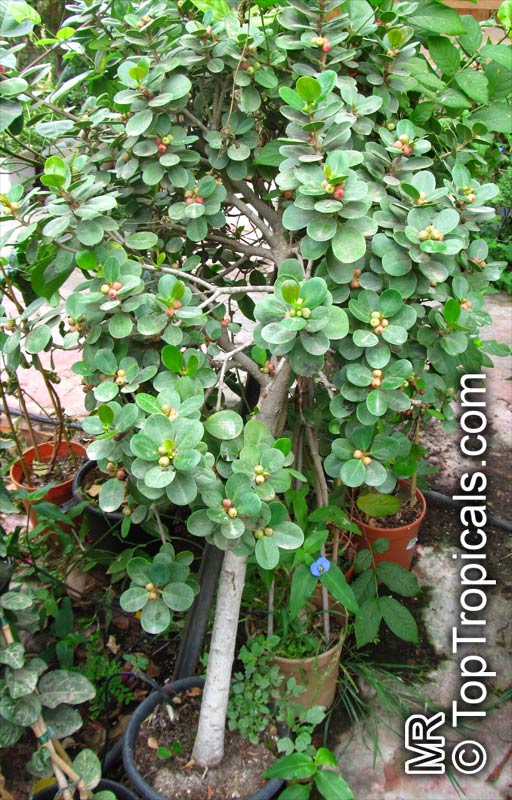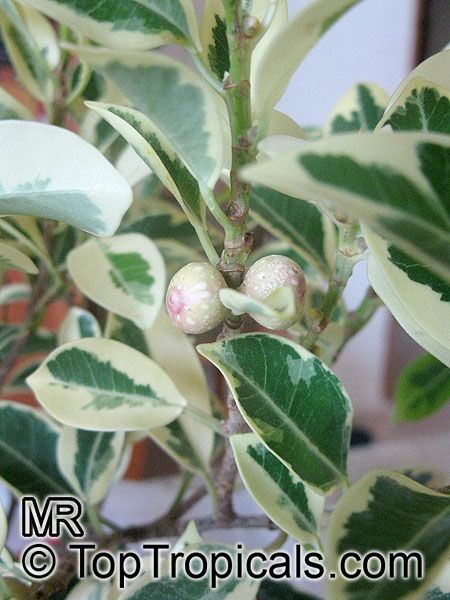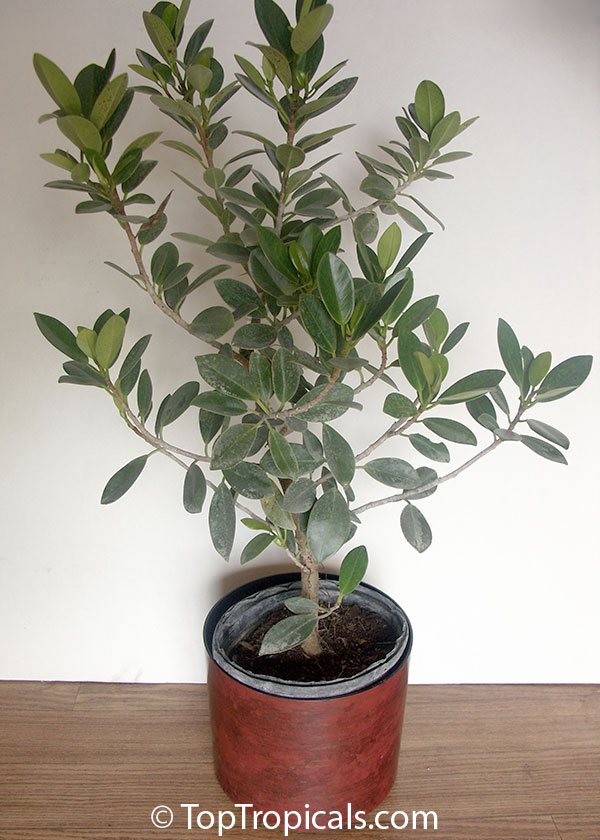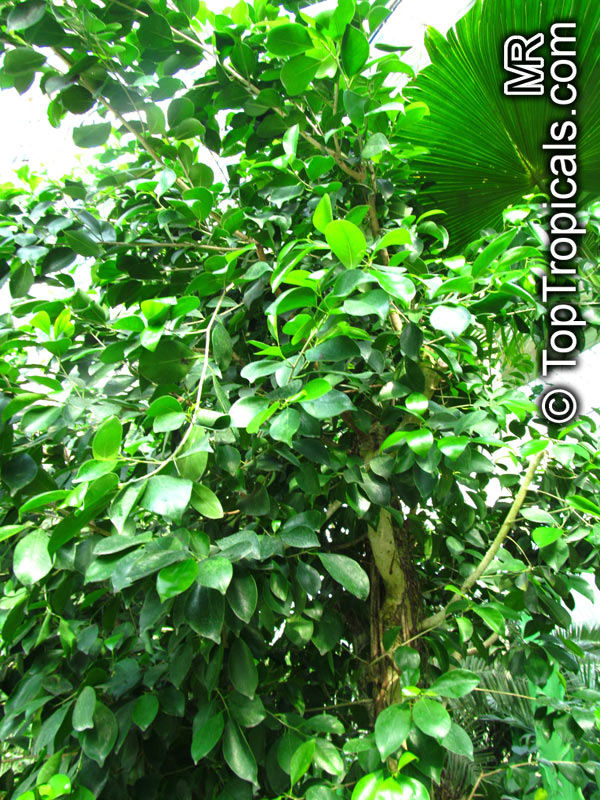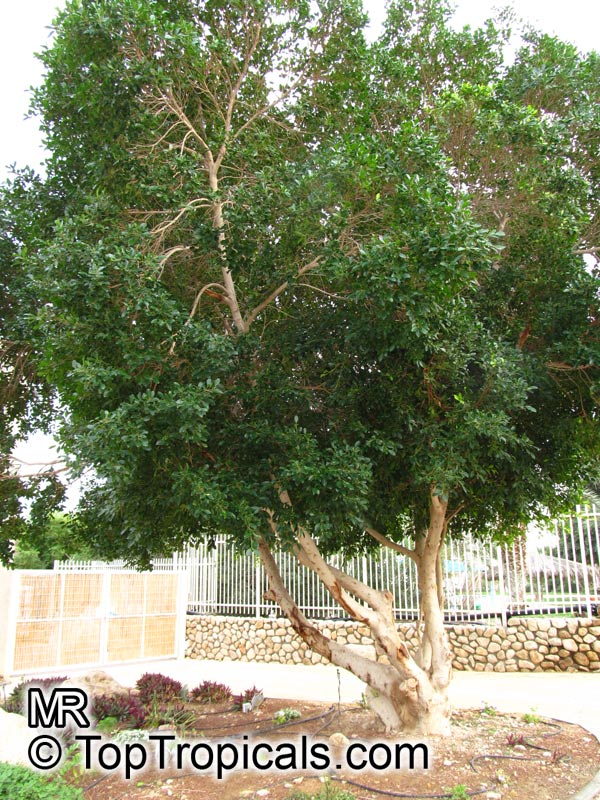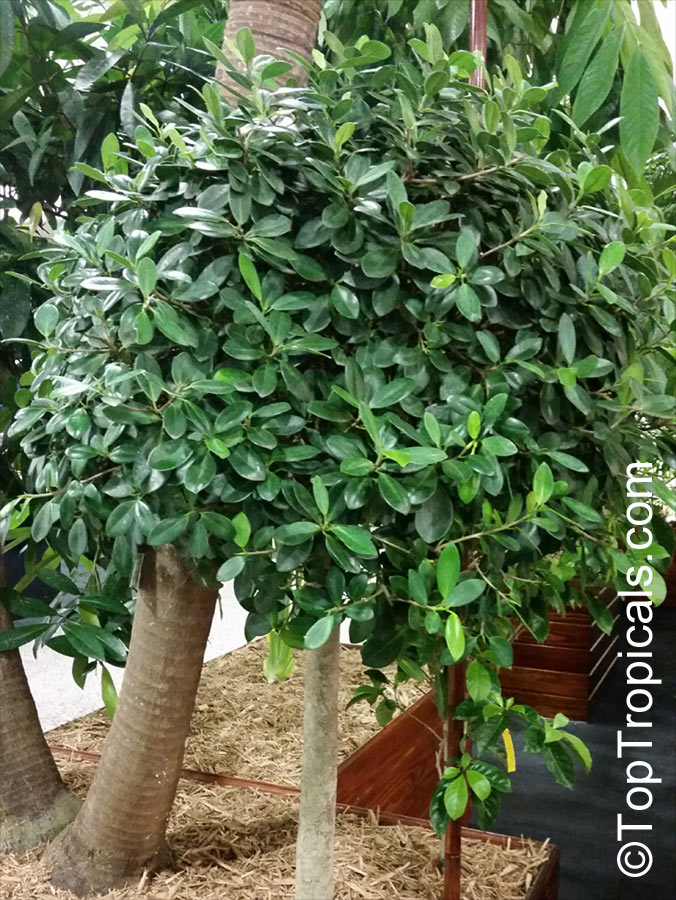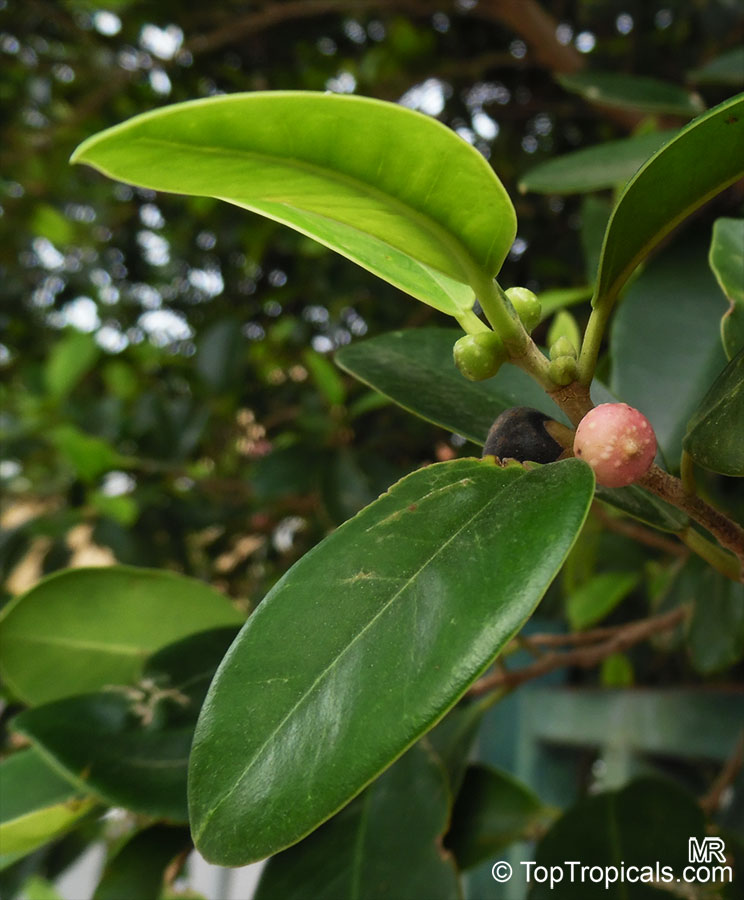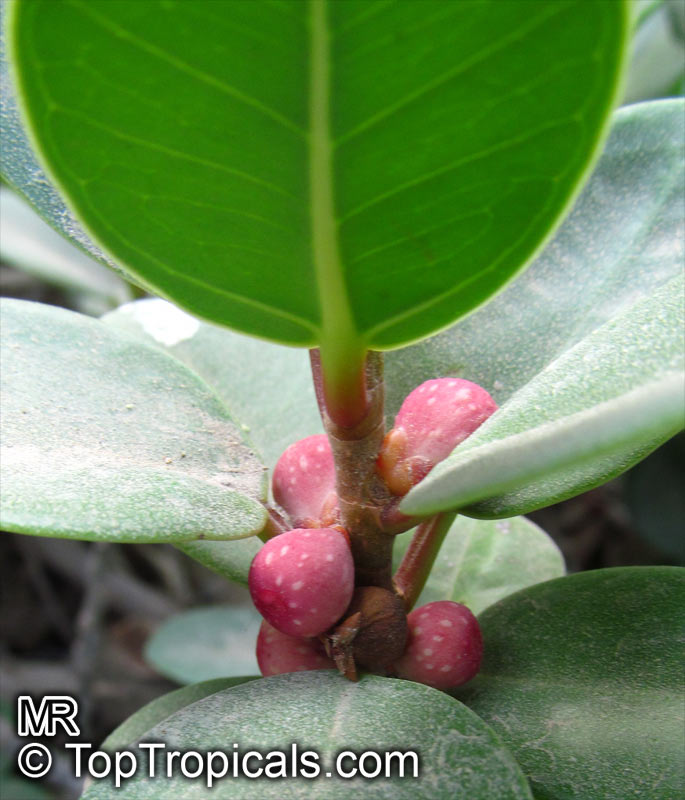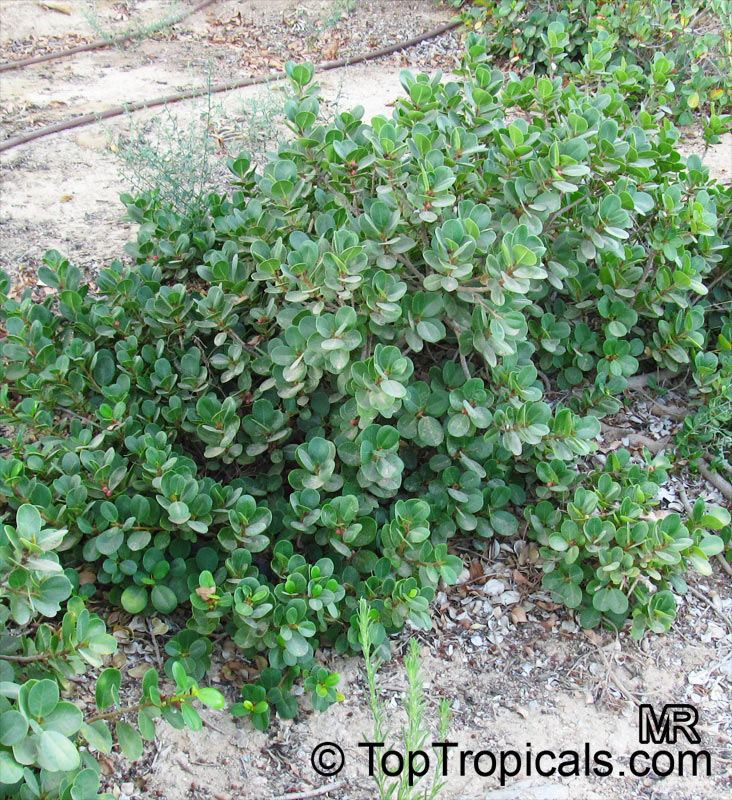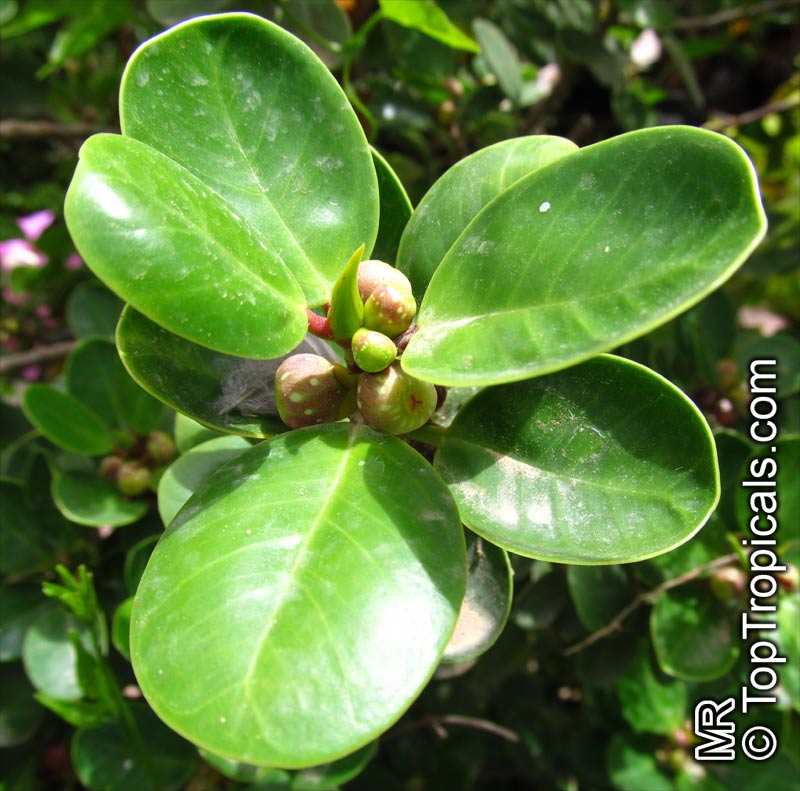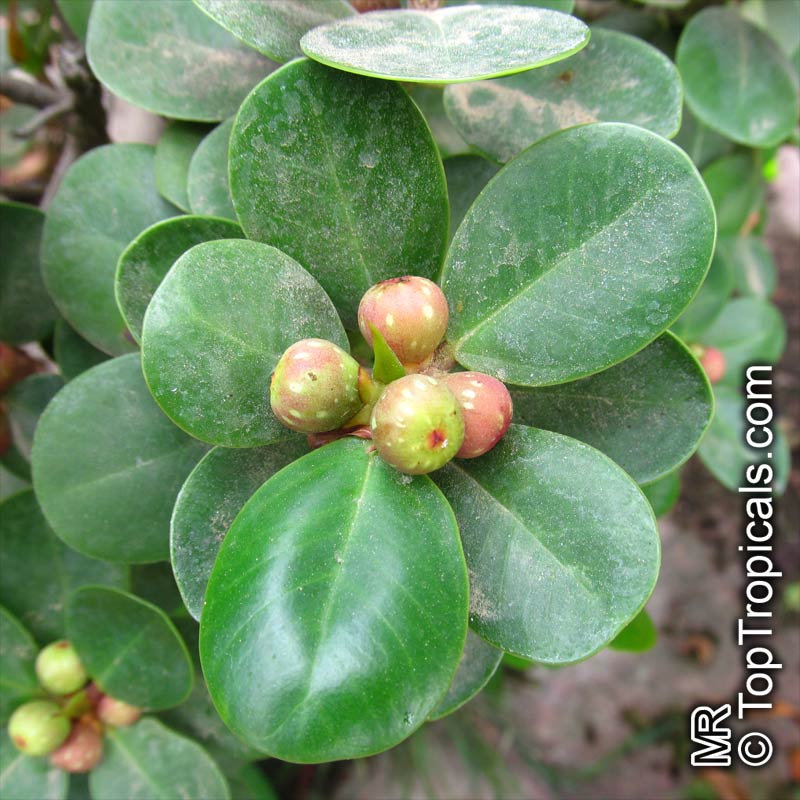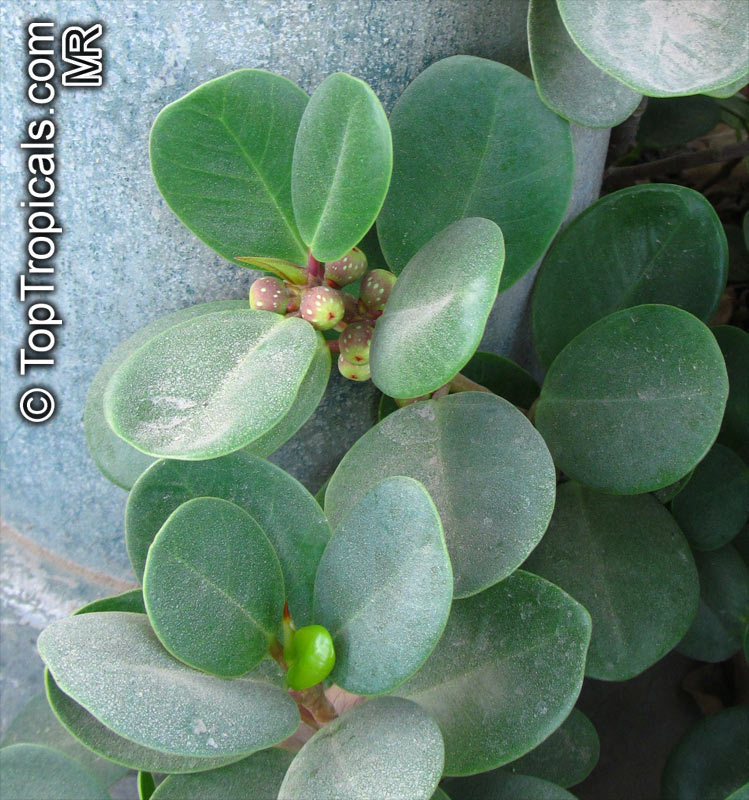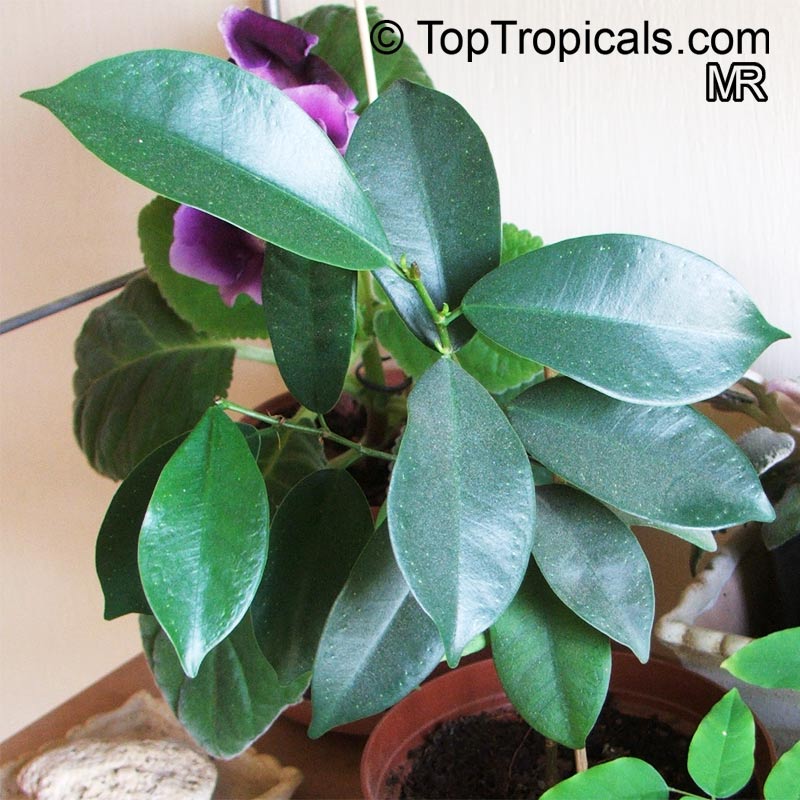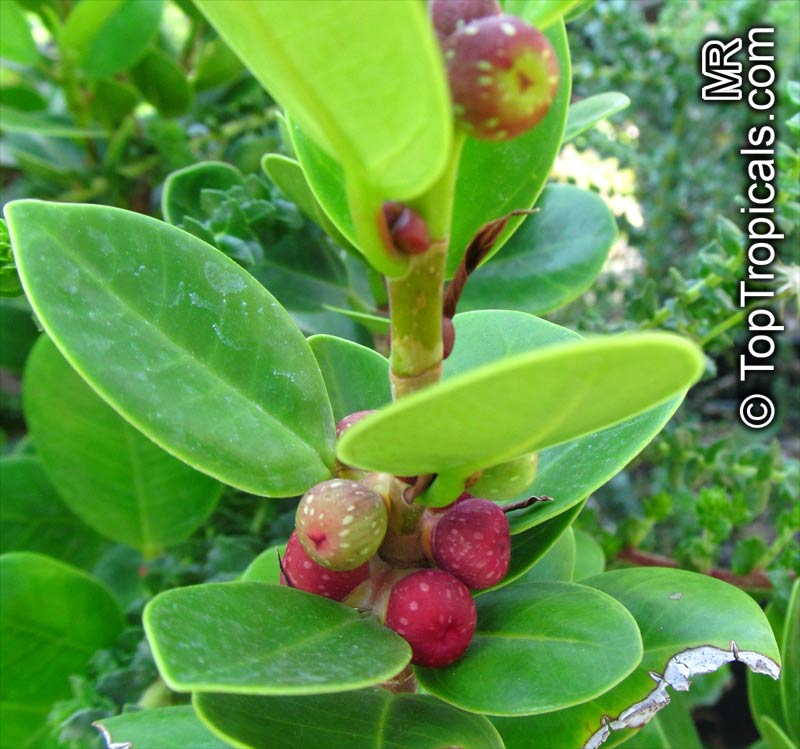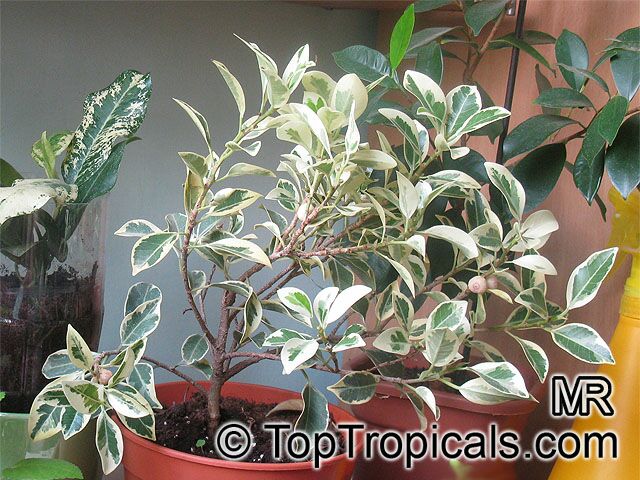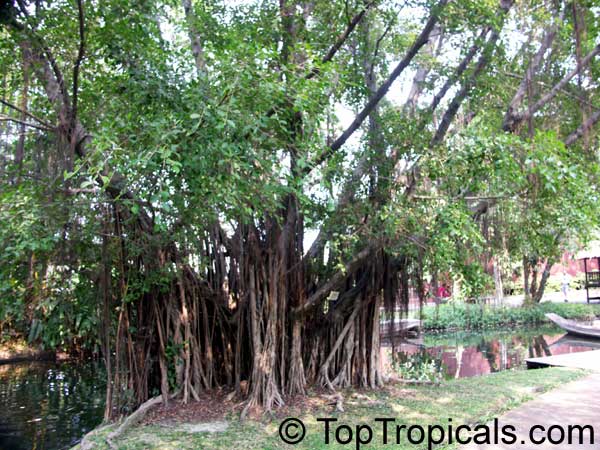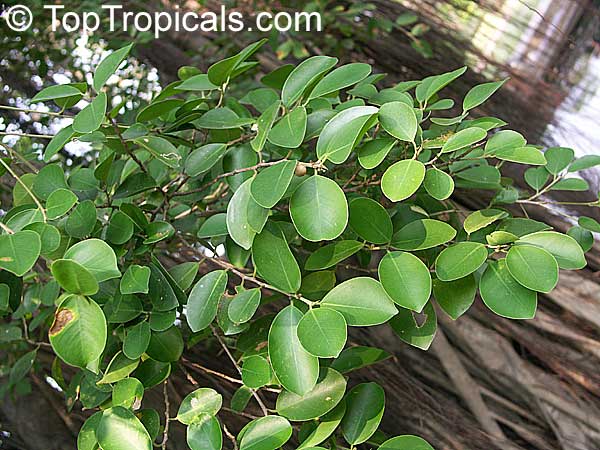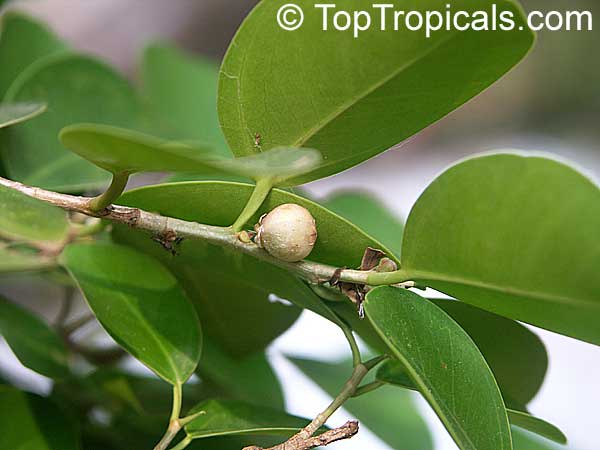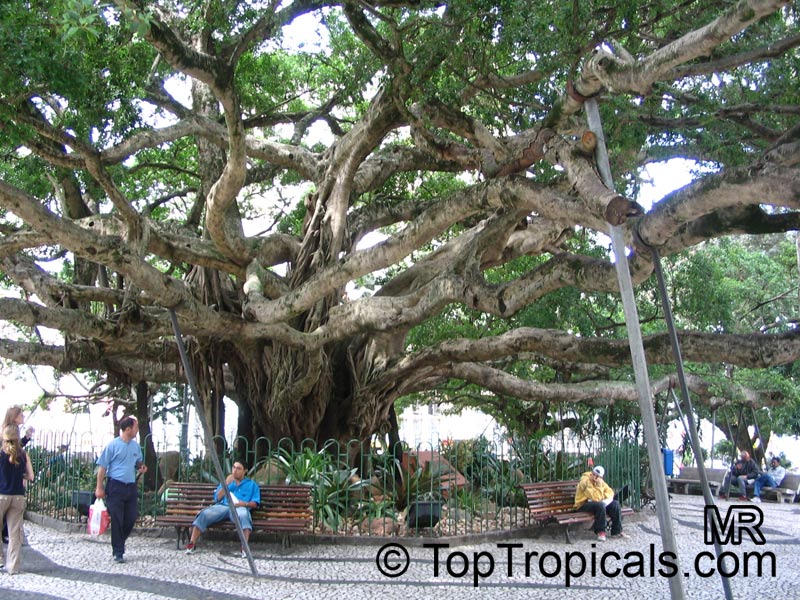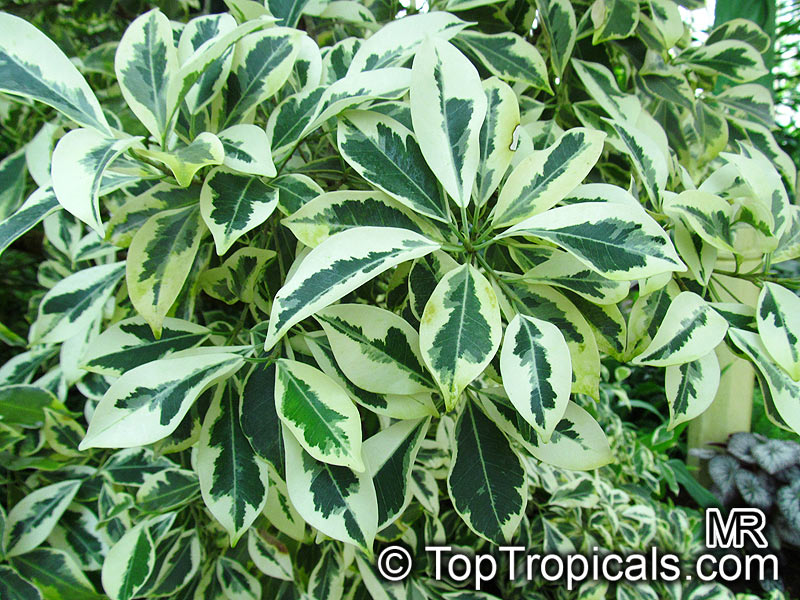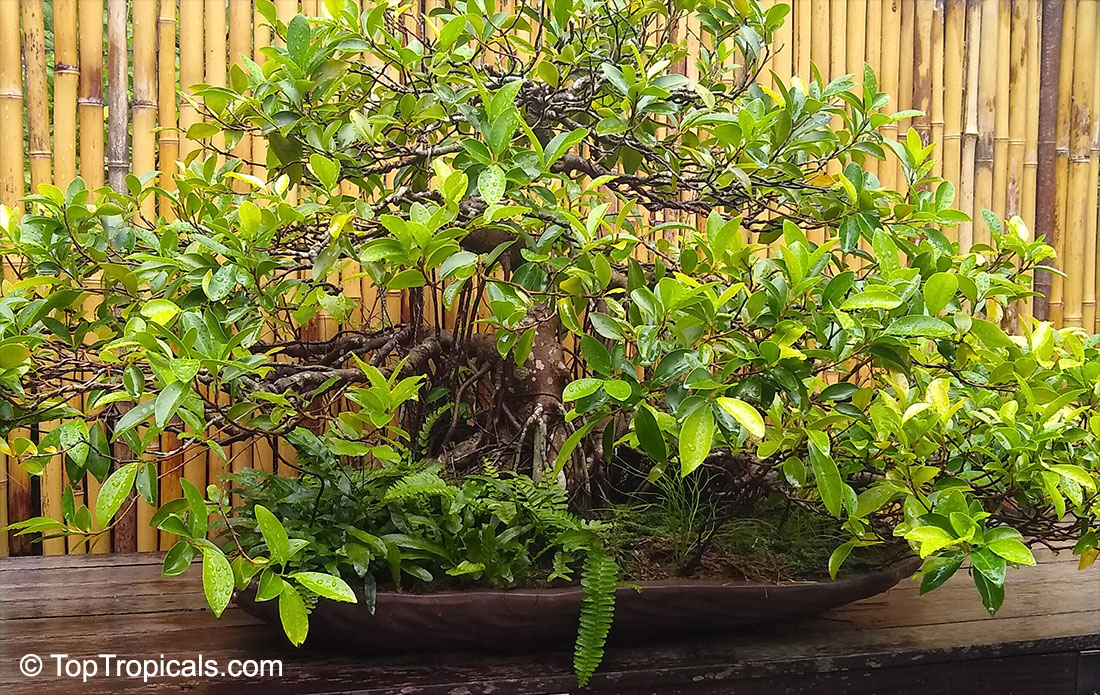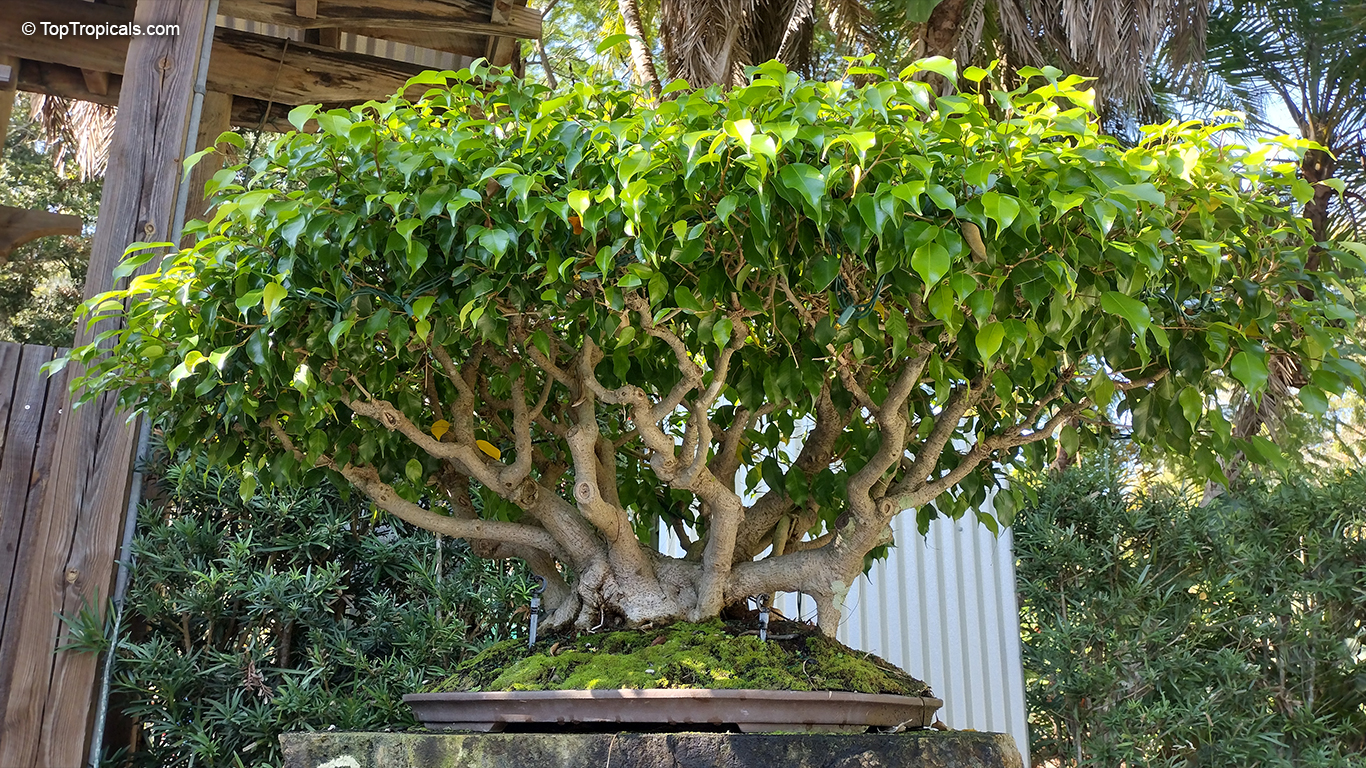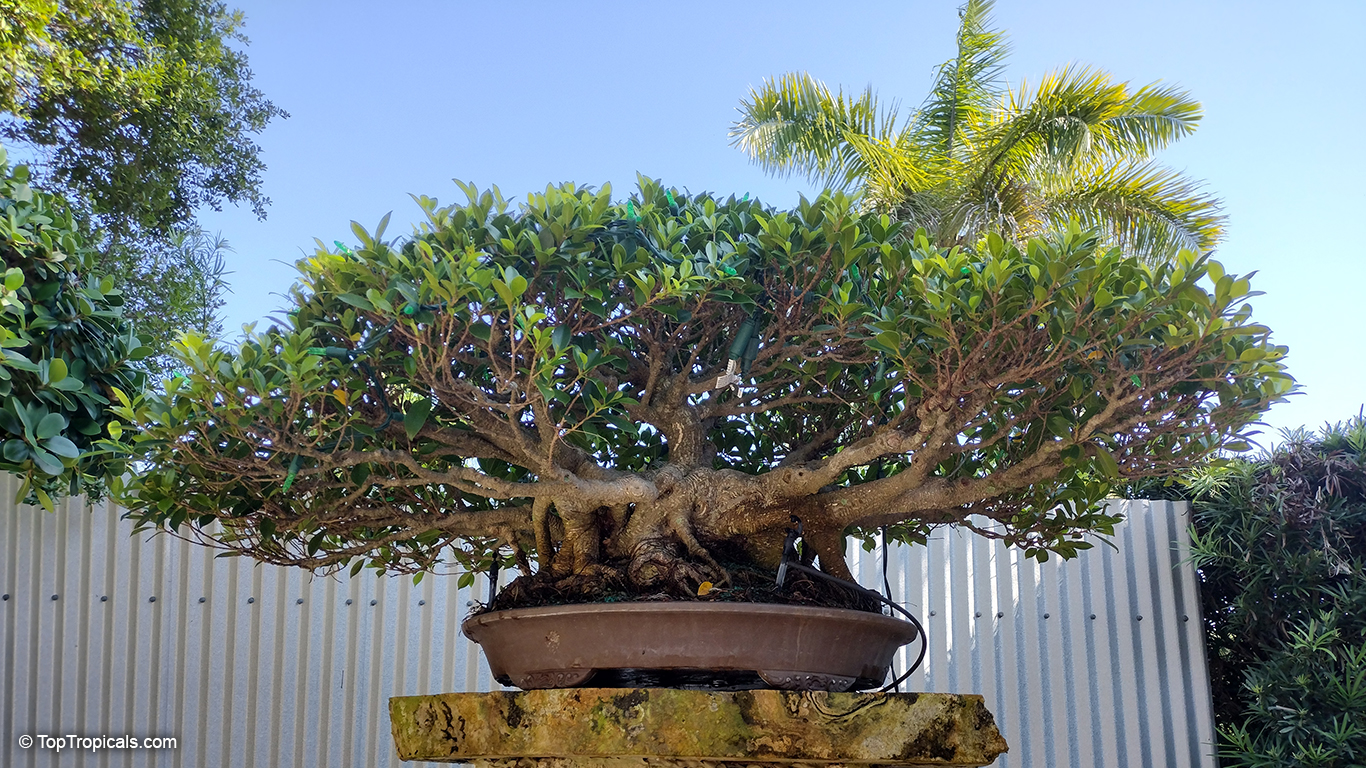Ficus microcarpa (Chinese banyan)
Top Tropicals Plant Encyclopedia
Botanical names: Ficus microcarpa, Ficus nitida, Ficus retusa
Common names: Chinese banyan, Indian Laurel
Family: Moraceae
Origin: Many Tropical regions Of the World





The pollinator wasp has been introduced to a number of places where the tree is cultivated, including Hawai'i, allowing this species to spread beyond initial plantings. Tiny seeds within small sized fruit are ingested by many fruit eating animals, such as birds. Seeds are capable of germinating and growing almost anywhere they land, even in cracks in concrete or in the crotch of other trees. The small seedling begins to grow on its host, sending down aerial roots, and eventually strangling and replacing the host tree or structure. F. microcarpa grows to about 60 feet in the wild, but it is easily trained as a bonsai. The bark is a smooth gray with a lot of aerial roots if you make sure it gets a lot of humidity. If you are growing them somewhere that has a lot of humidity never let the aerial roots grow out of the pot and into the ground. If this happens it will cause the bonsai to put out a rapid growth of branches and become a bush. Foliage is dark green and quite dense and grows upright. Retusa grow best in full sun with plenty of water. Fertilize with an organic or all purpose fertilizer every week. To prevent die back, prune only when the tree is actively growing. With terminal pruning the reuse will bud back easily. The milky white latex that is secreted when pruning branches may cause an allergic reaction to some people, so it is best to avoid contact with the skin.
Similar plants: Ficus microcarpa (Chinese banyan)
- Ficus abutilifolia (Large-leaved Rock Fig)
- Ficus altissima (Council Tree)
- Ficus aspera (Variegated Clown Fig)
- Ficus auriculata (Elephant ear fig tree)
- Ficus benghalensis (Banyan Tree)
- Ficus benjamina (Benjamin Fig)
- Ficus brusii (Highland breadfruit)
- Ficus capensis (Broom Cluster fig)
- Ficus carica (Fig Tree)
- Ficus citrifolia (Shortleaf Fig)
